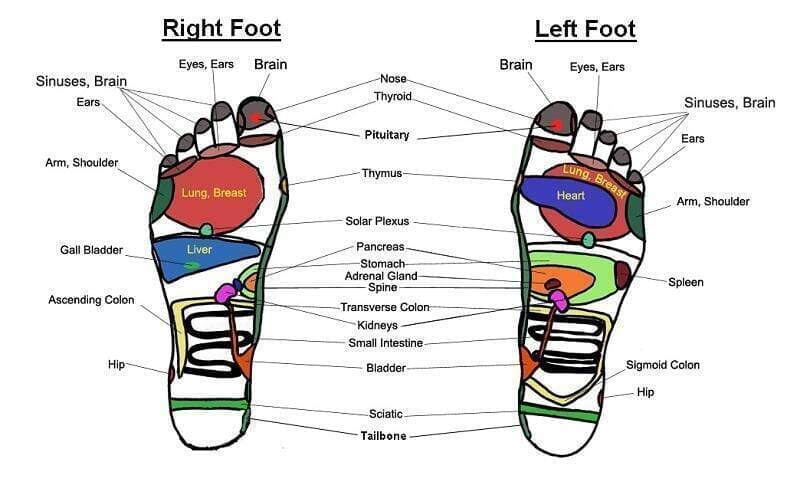How to Get into Running | Herbal Goodness
If you are thinking of taking up running, you can revel in the knowledge that it is one of the best things you can do for your body. I mean, the health benefits you stand to reap are immense, benefits that extend well beyond any pill your doctor could prescribe.
Running is a form of full body workout that will have you looking trim and feeling great within no time. It is a great stress reliever and will work your cardiovascular health a treat. This perfect cardio exercise can be meditative, and research has shown that it vastly enhances the quality of your emotional and mental wellbeing, among a host of other benefits.
Related: Hair, Skin and Nails Ebook
And the best thing about it?
It doesn’t require any equipment; you don’t need to pay any gym membership or class fees, and you don’t have to factor travel into your workout. Simply bolt out of your front door, keep pace, and by the time you get back, voila, workout complete!
Suggested Reading: How to Naturally Build Muscles
When Running is Fun
While running may sound as simple as putting one foot in front of the other, getting into the sport needs you to understand a few things first before lacing up your shoes and hitting the pavement.
The reason is that overlooking some basic things might lead to possible injury, unnecessary fatigue or even burn out after just a few days out. And that’s not what we want. Running doesn’t have to be labored or painful. It should be something to look forward to, an activity to let off some steam.
Overcoming the initial teething issues is the key to unlocking the benefits and joys that come with running.
-
Know why you are running
One of the biggest mistakes people make when they start running is failing to figure out why they are doing it in the first place. If you are getting into running for the reason that your friend does it every morning or because it’s one of the buzzing trends this year, chances are you will falter along the way sooner rather than later.
Get clear on why you want to get into running.
Are you running so you can fit into that dress again?
Is it because it’s good for your heart?
Or are you using it as a springboard to up your endurance for another sport?
Whatever your reason, aim for and commit to it to avoid falling off the wagon. There is also an excitement that comes with knowing you have accomplished a certain goal.
-
Get the right pair of sneakers
Shoes can make or break your attempts at running. Invest in a pair that fits comfortably, supports your feet and looks awesome.
If you have a running shop within your vicinity, pop in and take your time as the attendants answer all questions you may have. If you deem them too pricey, consider shopping online.
One way to get good shoes for a fraction of the price is to go for the previous year’s version of the sneakers you were advised would be ideal for you.
-
Start small
As a beginner, you may feel the urge to, er, hit the road running. That’s understandable, but remember, your body is still adjusting to the new rigors of running and it will be a while (not days or weeks, but months) before you fully get accustomed.
When running, start out at a moderate pace and maintain it for the entire distance, even when the need to cut loose sets in. Moderate in this case implies a pace that allows you to hold a conversation while running.
Only by allowing your body to gradually adjust to the new demands will you enjoy long-term success.
-
Take it easy
There is also the small matter of running technique, an oft-overlooked part of the sport.
Sure, we’ve all run at some point in our life. The thing is, though, running effectively requires employing the proper technique to avoid wasting a lot of energy and making it harder than it really is.
Instead of long, powerful strides that only serve to slow your momentum with every footstep, try shorter, easy steps that don’t force you to stretch much.
The idea is to run as effortlessly and relaxed as possible. Your body will do the rest as it develops the coordination required to handle the complex series of movements with every mile you jog.
-
Shorter running intervals
We get it, you are super-excited to get into the groove as fast as possible. When you are starting out, however, resist the urge to run too hard, too often or too much. Rather, opt for shorter intervals that alternate walking and jogging to allow you to recover.
In fact, the very first days should be more of walking than running. Start out by taking a continuous 20-minute walk to condition your body. Then insert short segments of running after, say, the third day.
But all this will make better sense if you…
-
Have a plan
Having a running schedule helps, especially for beginners.
Here is an example of a simple 31-day schedule that works great.
As alluded to in the previous point, start by taking an uninterrupted walk on the first day, ideally between 20 to 30 minutes. Without any running, yes.
Rest on Day 2 (no walking, no running whatsoever), then repeat the first day on Day 3. The only tweak you will need to make is including a one-minute jog after the first 10 minutes of walking. Then walk the rest of the way.
On the fourth day, do another 20 minutes walking, just as in Day 1. On Day 5, repeat Day 3, but this time, jog on Minutes 9 and 11.
From the sixth day onwards, add an extra minute of running every two days. It will get to a point where you are running half of the 20 minutes and walking the other half. Instead of running and walking 10 full minutes apiece, alternate between the two by splitting them into shorter segments.
Start by running two minutes and walking for one minute. Then run three minutes, walk one minute; run four, walk one; run five, walk one; six and so on, until you get to the point where you are doing a full 20-minute uninterrupted jog.
Then you can step it up when you reach that milestone.
-
Recovery time
Your body needs time to recover as the muscles, bones and cardiovascular system adapt to the new demands.
The above schedule takes this into account as it bids to ease you into running bit by bit.
When you reach a point where you start running non-stop, make it a habit to take some days off. Otherwise, the rest of us will be outside playing when you have holed up nursing sore calf muscles and icing your knees.
An average of four days a week should be sufficient.
-
Eat healthy and sleep plenty
As your body adjusts to the physical demands of exercise, so will the need to adjust your eating habits into a healthy balanced diet.
Keep it simple and aim for foods that will not hamper your efforts of becoming the better version of you. And if you can, source your produce from the local farmers market.
As for sleep, this is the best form of recovery you can afford your body. Try to squeeze in around seven hours of sleep each night.
Your body will thank you.
Suggested Read:
I How to workout when working out is hard
II Foot reflexology: 15 amazing pressure points on your feet











